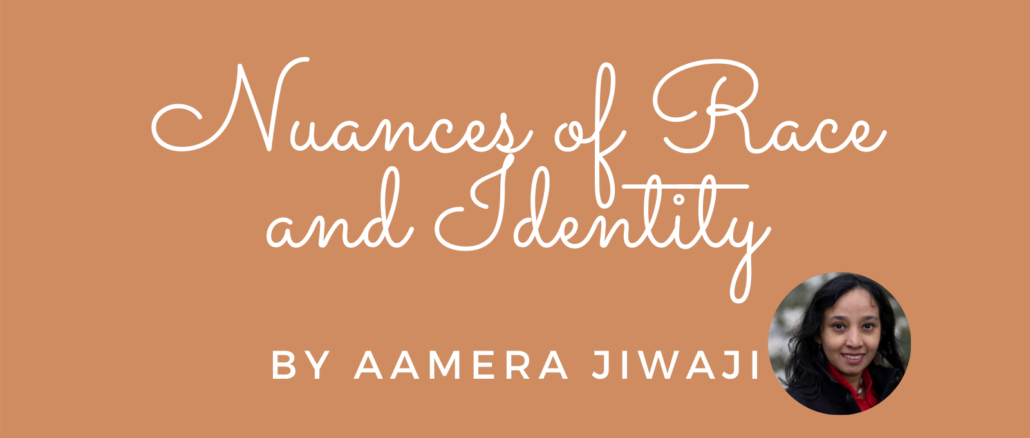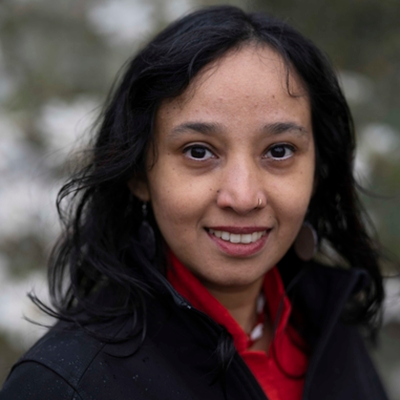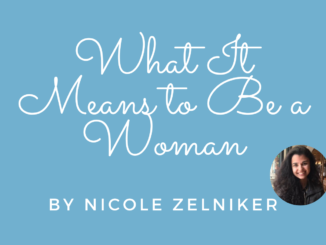
When I arrived in Nanaimo in 2014 as an international student, I received some strange comments. Bus drivers were surprised that I was a first-language English speaker. Classmates in my academic program, some of whom are citizens of India, would speak to each other in Gujrati and their jaws would hang open when I would reply in Gujrati.
My wavy black hair, black eye colour and brown complexion put me firmly into a box of South Asian heritage. But my smaller eyes and broader nose don’t quite align with that visual. A few Canadians even commented on the size of my smile, which is apparently too broad to be South Asian.
When I open my mouth to speak, I confuse them all over again. My accent is a mix of British and South African influences.
The final zinger is my citizenship. I am Kenyan. Every time I say that, I can see the brows furrow. Isn’t that in Africa? But I am not black?
Their minds probably run through some of the same questions that I have asked myself my entire life: Who am I? Where do I belong?
In Canada, I am an anomaly in a country where diversity is packaged into manageable, bite-sized pieces defined by skin tone, citizenship, fluency in English, and accent.
When I explain that I am a Kenyan Asian, Canadians aren’t really sure what to make of me. It isn’t a term they are familiar with. In truth, it isn’t a term that many Kenyans are familiar with either.
Kenyan Asians were only recognized as Kenya’s 44th tribe in 2017 even though the earliest South Asians to arrive in Kenya date back to the 17th century when they were brought to the region by the British as labourers to work on the Kenya-Uganda railway.
My great-grandfather came to Kenya in the late 1800s. According to a book that my dad’s eldest brother is writing, my great-grandfather was sent to Kenya to seek employment at a time when the province of Gujarat in India was suffering from drought. He was between 16 to 18 years old at the time, and he travelled to Kenya’s port city of Mombasa by dhow, which is a sail-assisted wooden ship commonly used in the Indian Ocean and Arabian Sea.
I remember a fanciful, more spicy, version that my father told my sister and I: Mota bawaji, my great-grandfather, ran away from home. He was a stowaway on a ship heading to South Africa, but when the ship stopped for supplies in Mombasa, he decided to stay. He was intrigued by the bustling port city, which was familiar and foreign at the same time, and Mombasa’s humid climate reminded him of home.
As any Kenyan Asian will tell you, our culture has morphed and changed over the generations. Habits that started as Indian have been altered by the Swahili influence in East Africa. When we travel to India, we don’t quite fit in; even our accents are different when speaking Gujrati or Hindi.
Although I shouldn’t limit this to Kenyans because it probably applies to anyone of Indian heritage living in Kenya, Uganda, or Tanzania. We are a community of East African Asians; national borders have little importance. Our East African identity has even superseded religion, and we identify less as Muslims and Hindus from the Indian sub-continent and more as Indians in East Africa. This has continued to be true as we immigrated to the west. In the UK and Canada, two countries I can speak to from personal knowledge, East African Asians bundle together for social and cultural activities.
A few months ago, I emailed a colleague at another university in Canada. We had never met in person, but this time I happened to mention that I was from Kenya. His reply came quickly sharing that his father was from Uganda, and that his family had immigrated to Canada when he was a year old. Immediately there was a sense of shared identity, of being seen. Books written by diaspora authors like MG Vassanji also capture this feeling. Vassanji may be Canadian but his stories are a throw back to his life in Tanzania.
But there’s also an ugly side to this shared camaraderie. We identify as East African Asians first, and there is a stigma to being defined as Indian. As if it were a contest that East African Asians won by leaving the Indian sub-continent first. This attitude was prevalent in my father’s family and my mother bore the brunt of it as an Indian citizen who came to Kenya for the first time as his bride.
The distinction exists in Kenyan society too. Newly arrived Indian citizens are discriminated against, while those who are second generation are accepted just a little bit more because they can speak Swahili and have integrated in some way.
I say “a little bit more” because despite the long history that Indians have in East Africa, we are still considered outsiders, interlopers. Every few months, there is a social media rant criticizing Kenyan Asians for being racist since very few intermarry with black Kenyans.
When I lived in Kenya, I confronted the discrimination I experienced as a Kenyan Asian. I was actively involved in the Samosa Festival, which uses art and culture to explore the three communities that define Kenyan society: Black, Asian, and European.
Despite that, I have not been able to shrug off the discomfort I feel when I am tagged as Indian, and it is something I have brought with me to Canada. Whenever I am described as Indian, I recoil.
As a third generation Kenyan, I do not want to be defined by my skin colour or my cultural heritage. Instead I want to be defined by what I have lived through. By my memories. And they are all Kenyan; not Indian.
With questions of racial discrimination coming to the forefront during the last year, I have started to question whether this stubbornness on my part is a form of racism, and whether by rejecting my Indian heritage, I am in fact rejecting a part of myself. Denying who I really am.
Every day, I grapple with these questions. The most difficult ones are about who I see myself as, and whether I am okay with that.

Aamera Jiwaji
Aamera Jiwaji is a Kenyan Asian who traces her heritage to India (four generations ago), and now lives in Canada. She has worked in international education, marketing, and communications. Writing non-fiction is her first love. Her first short story titled “Experiencing Lamu” was published in the Indian Voices (Vol. 1) anthology in 2011.


